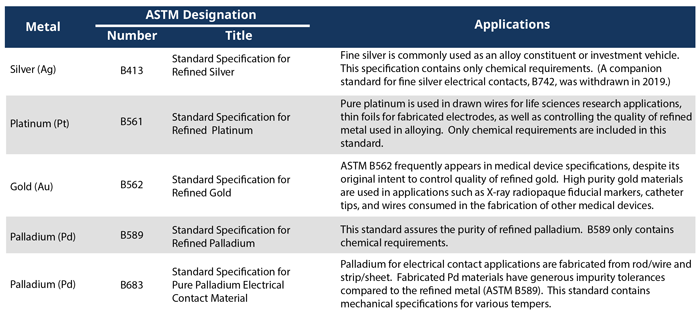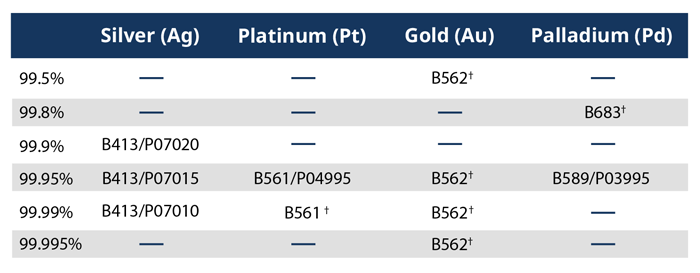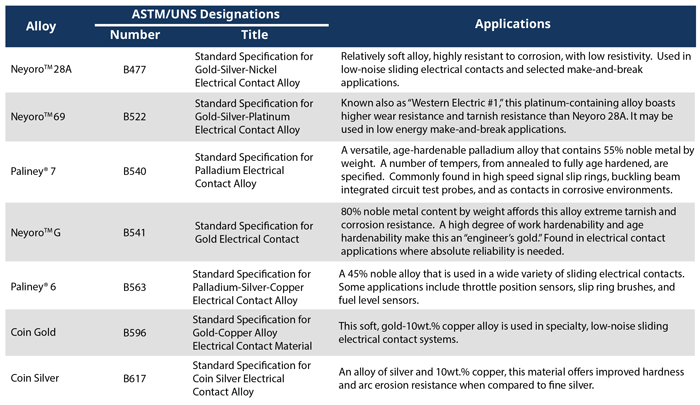Issue 013, July 9, 2021
Patrick K. Bowen, Ph.D., R&D Manager
Precious metals and their alloys have permeated a wide array of engineering applications and market spaces. To ensure delivery of products that conform to a specific set of chemical and/or physical requirements, the most common materials are governed by agreed-upon industrial specifications. The most commonly referenced standard specifications are set by producers and users in accordance with rules set forth by ASTM International, and curated by the same organization.
Standards for nonferrous materials are curated by committees B01 through B10, and can be recognized by the prefix “B.” Selected standards that pertain to pure noble metal elements in their refined and fabricated forms are enumerated in Table 1. Particular attention should be paid to the difference between “refined” and “fabricated” materials: the former is intended to govern pure elements procured as shot or sponge; the latter governs metals wrought into a usable form, such as wire or sheet.

Table 1: Standards curated by ASTM International that pertain to selected pure noble metals.
Chemical requirements for each element differ between the ASTM standards in Table 1 according to producer capabilities and quality expectations of users. Elemental purities for each element, their respective standard(s), and Unified Numbering System (UNS) identifier(s) are shown in Table 2.

Table 2: Standard purity ASTM International specifications for pure precious metals and corresponding UNS numbers (†indicates no UNS number assigned at the time of writing)
The aforementioned noble metal elements may be combined with other noble and base metals to create alloys of varied and well-recognized utility. Selected alloys for which ASTM specifications exist are listed in Table 3. (At the time of writing, no UNS designations have been applied to these alloys.) Because these alloys are used in engineering applications, most standards specify multiple tempers with varied mechanical properties.


Table 3: ASTM standards that pertain to selected noble metal-containing alloys produced by Deringer-Ney.
The noble metal alloys specified above may be fabricated in a wide array of physical forms including rod, wire, fine wire, strip, and foil, and are generally used at smaller dimensions than other nonferrous materials. These compositions and properties suit a wide range of applications. Bespoke material tempers may be available from, or developed by, Deringer-Ney on a custom basis for challenging applications, even while adhering to ASTM-standard compositional ranges.
Important notes: Paliney is a registered trademark and Neyoro is a trademark of Deringer-Ney Inc. “ASTM” and “ASTM International” are registered trademarks of ASTM International. Standards must be purchased directly from and used exclusively in accordance with the terms and conditions set forth by ASTM International.
